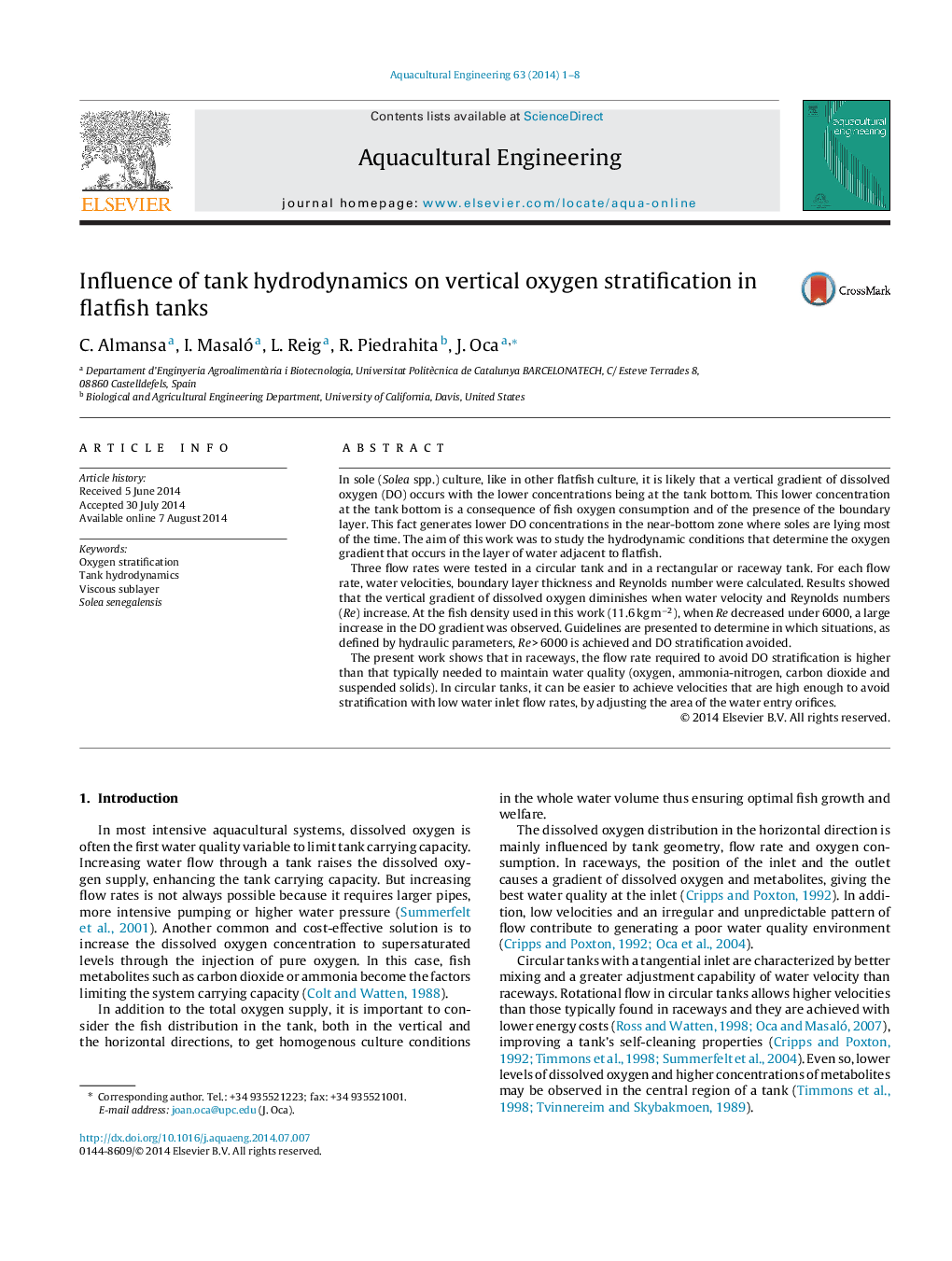| Article ID | Journal | Published Year | Pages | File Type |
|---|---|---|---|---|
| 4527152 | Aquacultural Engineering | 2014 | 8 Pages |
•The vertical oxygen gradient in circular and raceway tanks with sole was studied.•In both tanks, stratification was observed at Reynolds numbers under 6000.•In commercial raceways, the Reynolds numbers required can determine the flow rate.•In circular tanks, high enough Reynolds numbers can be achieved with low flow rates.
In sole (Solea spp.) culture, like in other flatfish culture, it is likely that a vertical gradient of dissolved oxygen (DO) occurs with the lower concentrations being at the tank bottom. This lower concentration at the tank bottom is a consequence of fish oxygen consumption and of the presence of the boundary layer. This fact generates lower DO concentrations in the near-bottom zone where soles are lying most of the time. The aim of this work was to study the hydrodynamic conditions that determine the oxygen gradient that occurs in the layer of water adjacent to flatfish.Three flow rates were tested in a circular tank and in a rectangular or raceway tank. For each flow rate, water velocities, boundary layer thickness and Reynolds number were calculated. Results showed that the vertical gradient of dissolved oxygen diminishes when water velocity and Reynolds numbers (Re) increase. At the fish density used in this work (11.6 kg m−2), when Re decreased under 6000, a large increase in the DO gradient was observed. Guidelines are presented to determine in which situations, as defined by hydraulic parameters, Re > 6000 is achieved and DO stratification avoided.The present work shows that in raceways, the flow rate required to avoid DO stratification is higher than that typically needed to maintain water quality (oxygen, ammonia-nitrogen, carbon dioxide and suspended solids). In circular tanks, it can be easier to achieve velocities that are high enough to avoid stratification with low water inlet flow rates, by adjusting the area of the water entry orifices.
